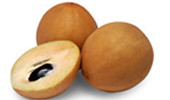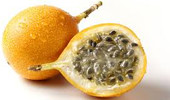With the right vegetables, however, you can eat as many as you want how many times you want it and not gain a pound. Exercise caution, however, by picking the right kinds of vegetables, as not all can keep you slim. This is because there are vegetables that are high in calories while there are also those who are low in calories. What are these low calorie vegetables?
The following are the types of vegetables that are considered to have low calories and are great to eat if you're in a diet or want to lose weight. These include carrots, cucumbers, radishes, fresh green beans, celery, cauliflower, cabbage, cherry tomatoes, mushrooms, and lettuce. Clearly, you don’t have to go all green when you’re in a vegetable diet. If you look at the choices, you can gather for yourself that these not only contain the least calories, they are packed with essential nutrients as well.
To be more specific, if you are on a low carbohydrates diet you might have been hearing that munching on vegetables is the way to go. However, just as there are vegetables that contain low and high calories, there are also vegetables that are low and high in carbohydrates. Do not generalize that just because they are vegetables they are immediately low in carbohydrates. Vegetables that are low in carbohydrates include but are not limited to sprouts, leafy greens, hearty greens, herbs, sea vegetables, broccoli, mushrooms, avocado, peppers, summer squash, scallions, asparagus, bamboo shoots, leeks, eggplants, artichoke hearts, okra and more. Of course, low calorie vegetables are also low in carbohydrates so you can take your pick.
To be cautious, here's a list of vegetables that are starchy and are high in carbohydrates. These include beets, corn, parsnips, peas, all types of potatoes, and winter squashes. If you want to experiment on other types of vegetables, as there are many available in the produce section, you can check out their calorie and carbohydrate count on the internet to guide you on your diet.
Other types of vegetables that should be included in your diet list are those full of fiber. Don't be confused by this statement. Though vegetables in general are good sources of fiber, there are certain types of vegetables that contain more fiber than others. Examples of these fiber-rich vegetables include brussel sprouts, carrots, cooked beans and peas, and spinach. Cruciferous vegetables are also good sources of fiber such as cabbage, broccoli, and cauliflower. These vegetables are good sources of soluble fiber. Soluble fiber helps keep you feeling full and therefore makes it easier for you to resist eating too much food.
Though vegetables are generally not harmful if you are on a diet, observing the right serving sizes will help accelerate the results you want to see. The National Cancer Institute has recommended certain serving sizes for different types of vegetables. The recommended serving size if you are eating raw non-leafy vegetables or cooked vegetables is half a cup. If you are eating raw leafy vegetables, the recommended serving size is one cup. If cooked beans or peas are what you’re having for a meal, the recommended serving size you should take is half a cup. These serving size recommendations are considered not only healthy but aids in dieting as well. Since all the vegetables enumerated earlier don’t all contain the same amount of carbohydrates, it is still helpful to do a carbohydrate count on those you want included in your diet. A good point to remember when you are calculating carbohydrates is to exclude the fiber count because this is generally not included.
While you are on a vegetable diet, keeping a few tips in mind to be careful is essential. You might have lost weight but you got sick in the process so what’s good in that? When you pick out vegetables, try to go to the organic produce section. If you can’t get hold of organically grown products then exercise caution by washing your vegetables thoroughly. Vegetables that are not organically grown contain pesticides which are harmful to your health.
When you are picking out vegetables, choose the freshest among the lot. You can tell when it’s fresh if it’s brightly colored and are blemish-free or has the least amount of blemishes. In-season vegetables are guaranteed to be fresh so buying vegetables growing in their season is a good idea. You shouldn’t plan on storing vegetables for too long. Buy only the vegetables you plan to be eating in a few days. Other than that you should discard vegetables that have been stored too long. When you eat vegetables, try to leave as much edible skin on them as possible. The skin on vegetables contains their own nutrients which can benefit your health. Eating vegetables raw is also a good idea as cooking them can take away some of the nutrients and add fat from the oil you used.
When you are picking out vegetables, choose the freshest among the lot. You can tell when it’s fresh if it’s brightly colored and are blemish-free or has the least amount of blemishes. In-season vegetables are guaranteed to be fresh so buying vegetables growing in their season is a good idea. You shouldn’t plan on storing vegetables for too long. Buy only the vegetables you plan to be eating in a few days. Other than that you should discard vegetables that have been stored too long. When you eat vegetables, try to leave as much edible skin on them as possible. The skin on vegetables contains their own nutrients which can benefit your health. Eating vegetables raw is also a good idea as cooking them can take away some of the nutrients and add fat from the oil you used.
As you can see, vegetables don’t seem daunting in the very least. These are great, quick and cheap alternatives to fatty foods that bring on the ounces on your weighing scale. As they are low in fat, cholesterol, sodium and calories naturally, it is no wonder that vegetables have been advocated to dieters for such a long time. If recipe is your problem, there are great recipe books or online recipes that show you great ways to make your vegetables tasty without adding unnecessary fat and taking away their nutrients. People who eat vegetables raw often feel additional benefits and is particularly good at this time of year.





















